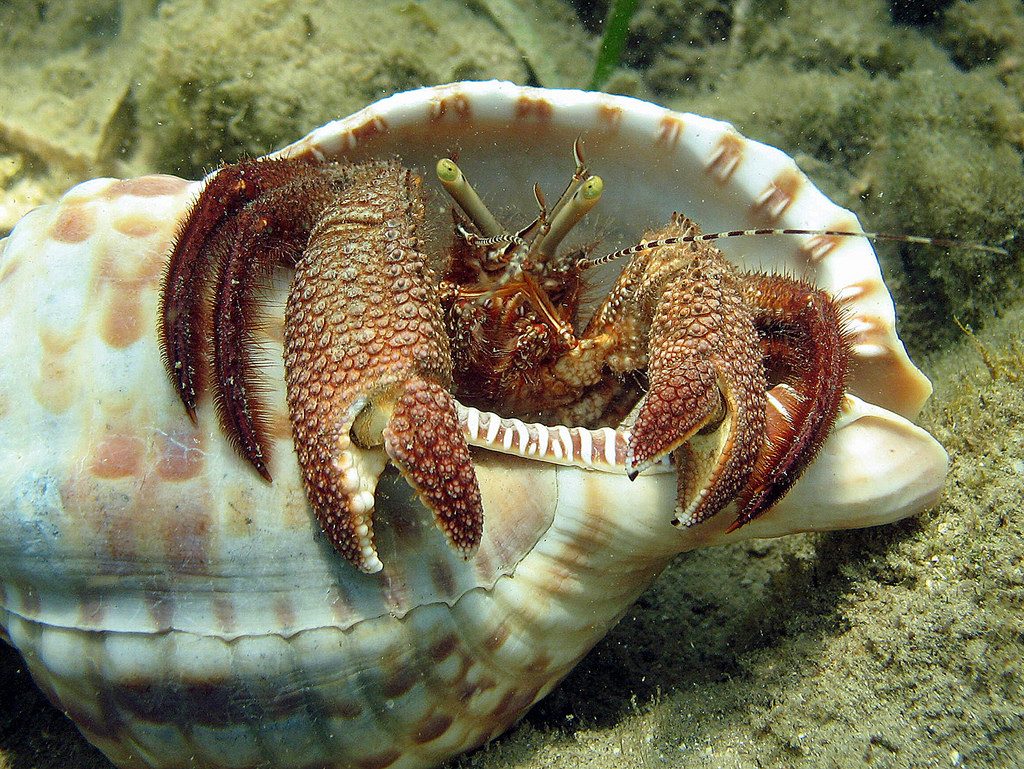As hermit crabs grow, they must exchange their shell for a larger one. Hermit crabs have a hard exoskeleton that protects all of the body except the abdomen. The reason they seek out shells is because their abdomen is very soft and vulnerable to predators. There is frequently strong competition with hermit crabs fighting over available abandoned shells.
A hermit crab with a shell which is too small can not grow as fast as hermit crabs will well-fitting shells and is more likely to be eaten.

Terrestrial hermit crabs begin their lives in the sea but, through a series of molts, develop the ability to breathe air. After the last developmental molt, the young hermit crab will drown if left in water for an indefinite period of time.
Their link with the sea is never entirely broken, however, as hermit crabs carry a small amount of water in their shells at all times to keep their abdomen moist and their modified gills hydrated.
In some hermit crabs, fertilization occurs internally, while in others, fertilization is external and occurs at the moment of egg-laying. The developing eggs are attached to the abdominal swimmerets present only in the females. A female is able to carry several thousand eggs into the water.















